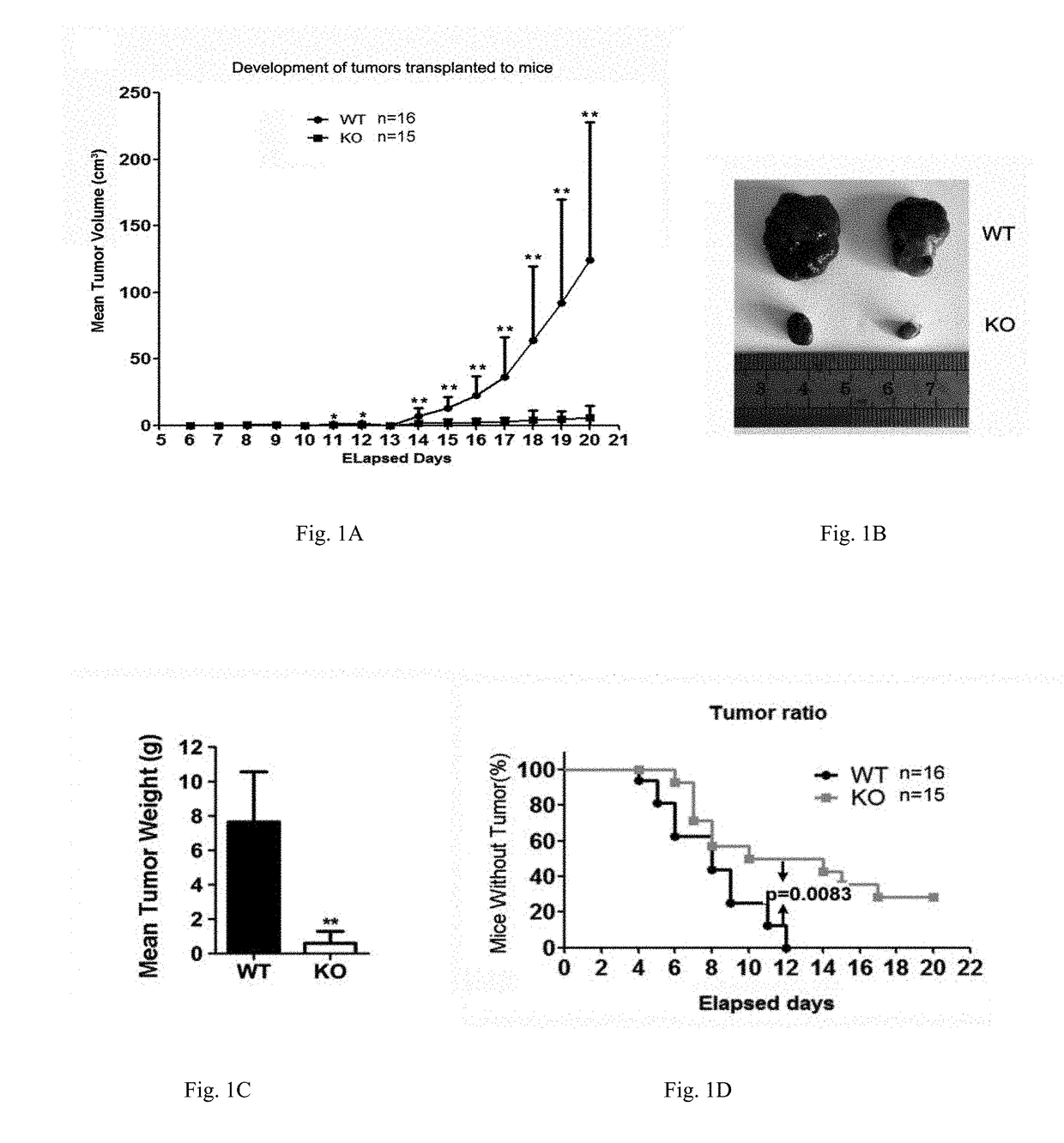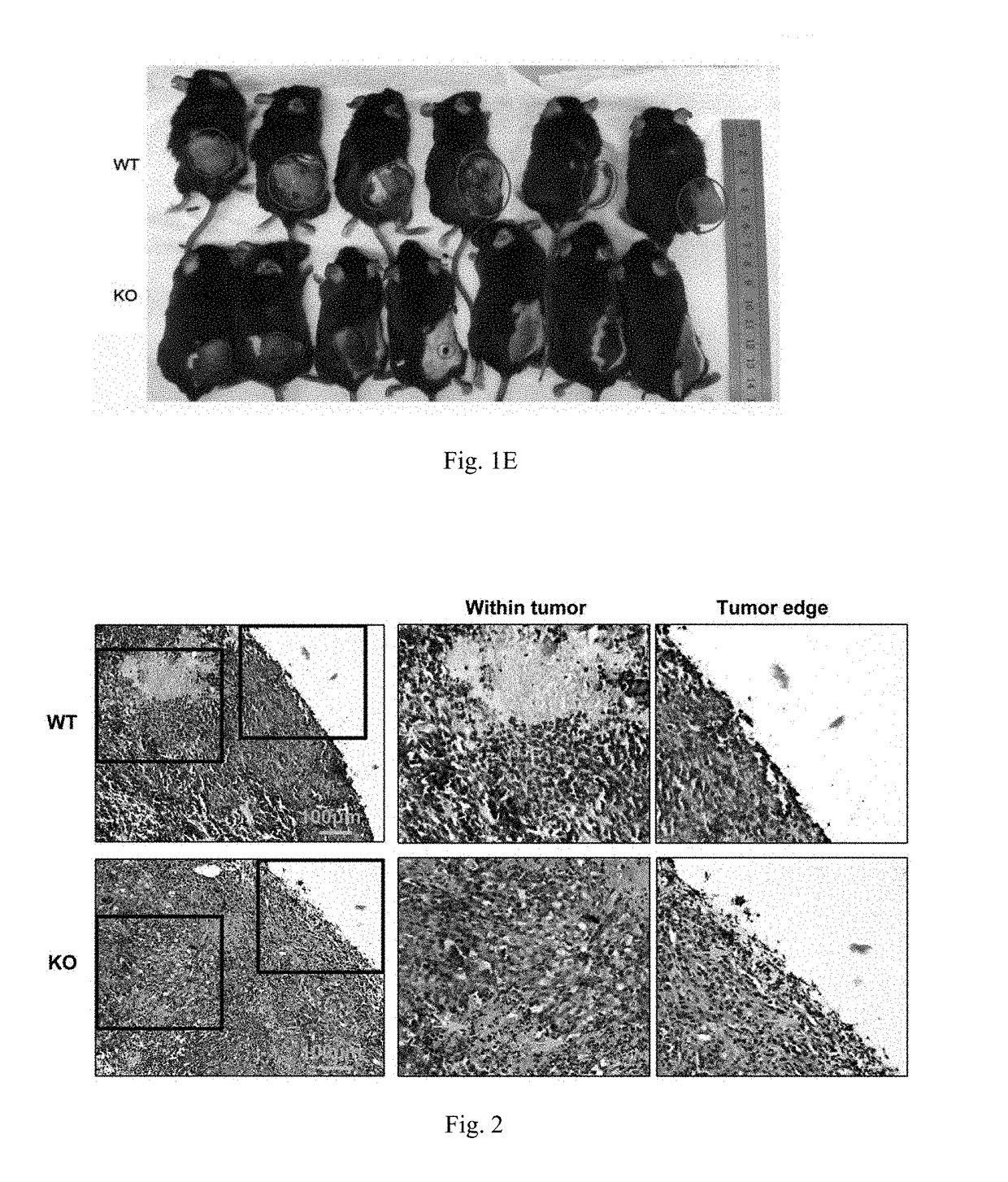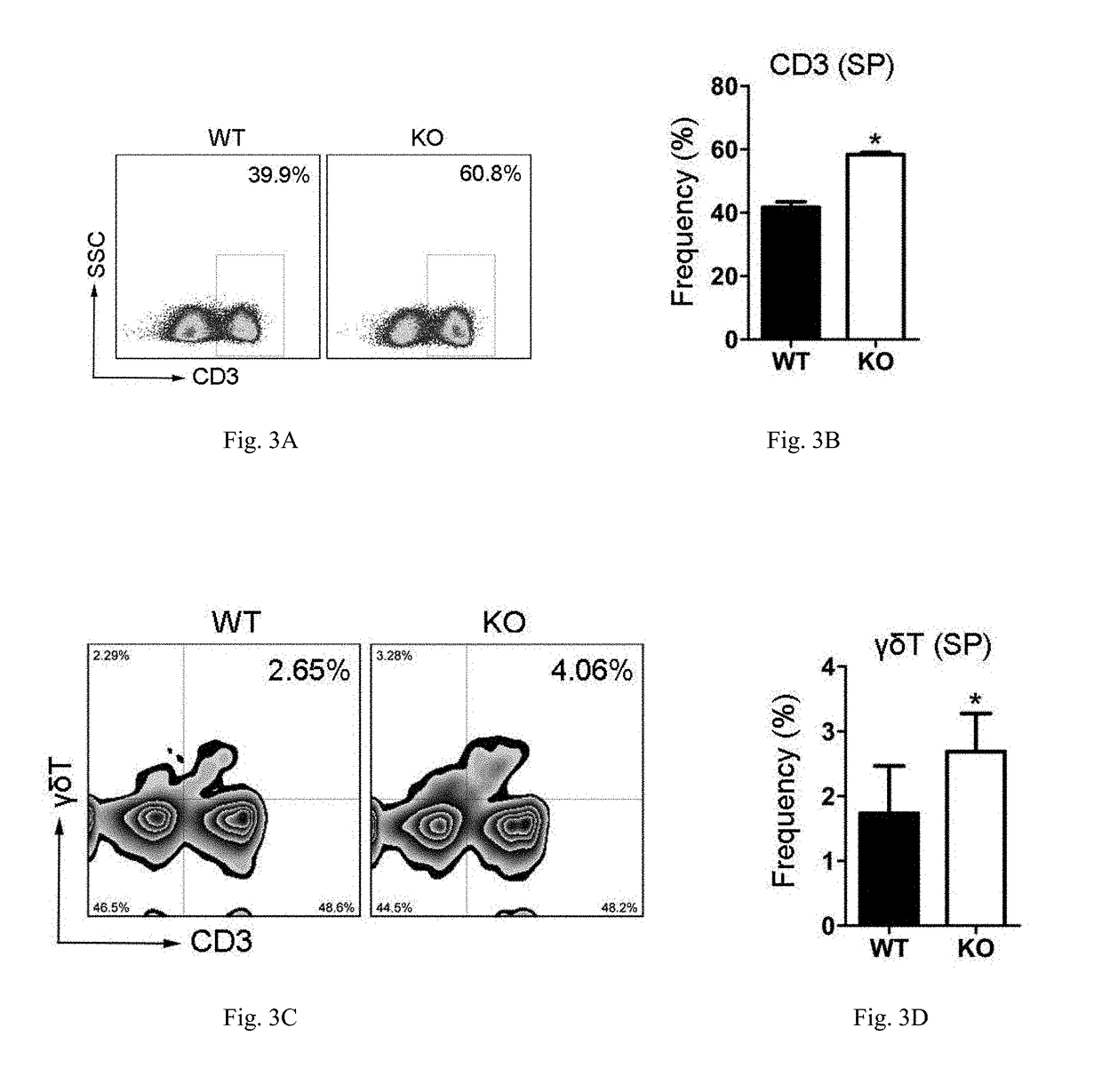Fats as a target for treating tumors and uses thereof
a tumor and fat technology, applied in the field of biotechnology, can solve the problems of high percentage of deaths in all skin cancers, low survival rate of patients in metastatic stages, and high mortality rate of patients with metastatic melanoma
- Summary
- Abstract
- Description
- Claims
- Application Information
AI Technical Summary
Benefits of technology
Problems solved by technology
Method used
Image
Examples
example 1
Regulation of FATS Gene Defect on Melanoma and Tumor Immune Microenvironment in Mice
1.1 Subjects and Methods
1.1.1 Materials, Reagents and Instruments
1.1.1.1 Reagents
[0105]
Collagenase IVSigma-Aldrich, USMouse Lymphocyte Separating MediumTBD Science, TianjinTriple StimulantBioLegend, USBovine Serum Albumin (BSA)GIBCO, USPermeabilization Wash BuffereBioscience, USCytofix / Cytoperm BuffereBioscience, USFixation BuffereBioscience, USCFSEInvitrogen, USM-MLV Reverse TranscriptaseInvitrogen, USReal-time PCR KitDBI ® Bioscience Co., Ltd.
1.1.1.2 Cell Lines
[0106]B16 cells.
1.1.1.3 Antibodies
[0107]Anti-mouse CD3-PE, Anti-mouse CD8a-APC, Anti-mouse NK1.1-APC, Anti-mouse γδ-APC, Anti-mouse CD3-PE-CY7, Anti-mouse CD4-APC, Anti-mouse Ly6C-PE, Anti-mouse Ly6G-PeCy5.5, Anti-mouse CD44-PE, Anti-mouse IFN-γ-PE, Anti-mouse CD11b-FITC, Anti-mouse CD11b-PE and Anti-mouse MHC-II-PE, eBioscience, US; Anti-mouse CD25-FITC, Anti-mouse Foxp3-PE, Anti-mouse F4 / 80-APC, Anti-mouse CD206-FI FITC, Biolegend, US.
1.1.1...
example 2
Cellular and Molecular Mechanisms of the Regulatory Effect of FATS Gene Defect on Mouse Melanoma
2.1 Subjects and Methods
2.1.1 Materials, Reagents and Instruments
2.1.1.1 Reagents
[0190]
Apoptosis detection kit: AnnexinV / PI Sungene Biotech Co., Ltd.assay kitNO assay kitBeyotime Co., Ltd.IL-2 ELISA assay kitMulti Sciences Biotech Co., Ltd.CD3+ magnetic beadsMiltenyi Biotech, GermanyRadio-immunoprecipitation assay Sigma, USbuffer (RIPA)Phenylmethanesulfonyl fluoride Sigma, US(PMSF)OPISigma, USLipopolysacchafides (LPS)Sigma, USSkim milk powderTianjin Biomek-Biogo Co., Ltd.Bradford protein quantitative assay Beijing Biomed Biotech Co., Ltd.kit
2.1.1.2 Cytokines
[0191]
M-CSFR&D, USIL-4R&D, USIFN-γR&D, US
2.1.1.3 Antibodies
[0192]
P65Cell Signaling Technology, USIκBαCell Signaling Technology, USβ-actinSungene Biotech Co., Ltd.Histone 3Sungene Biotech Co., Ltd.HRP-conjugated goat anti-mouse IgG AbCell Signaling Technology, USHRP-conjugated goat anti-rabbit IgG AbCell Signaling Technology, US
2.1.1.4 ...
example 3 experiment
of FATS-KO Mouse Bone Marrow-Derived Macrophage Adoptive Therapy
3.1 Subjects and Methods
3.1.1 Experimental Methods
3.1.1.1 Establishment of a Subcutaneous Xenograft Model of Mouse Melanoma (Refer to 1.1.3.2)
3.1.1.2 Separation of Mouse Bone Marrow Cell (Referring to 2.1.3.4)
3.1.1.3 Directed Differentiation of Mouse Bone Marrow-Derived Macrophages (Refer to 2.1.3.5)
3.1.2 Method
[0259]10 female C57BL / 6 mice, 6-8 weeks of age and weighing 18-20 g, were subcutaneously injected with B16 cells (2×105 cells / mouse) to establish a xenograft model of subcutaneous melanoma (referring to 1.1.3.2 for specific procedures). The mice were randomly divided into two groups (5 mice per group). M0 type macrophages derived from the directed differentiation of bone marrow cells (stimulated with LPS for 12 hours) from the wild type and KO mice, were adoptively infused into the C57BL / 6 mice on the 2nd and 7th day of tumor-graft, respectively. Tumor size was continuously monitored. The C57BL / 6 mice were sacrif...
PUM
| Property | Measurement | Unit |
|---|---|---|
| Immunogenicity | aaaaa | aaaaa |
Abstract
Description
Claims
Application Information
 Login to View More
Login to View More - R&D
- Intellectual Property
- Life Sciences
- Materials
- Tech Scout
- Unparalleled Data Quality
- Higher Quality Content
- 60% Fewer Hallucinations
Browse by: Latest US Patents, China's latest patents, Technical Efficacy Thesaurus, Application Domain, Technology Topic, Popular Technical Reports.
© 2025 PatSnap. All rights reserved.Legal|Privacy policy|Modern Slavery Act Transparency Statement|Sitemap|About US| Contact US: help@patsnap.com



